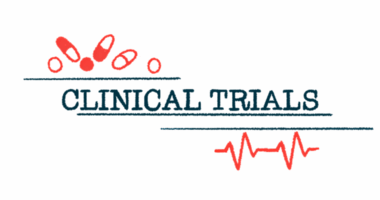Switch to Zilbrysq for gMG found safe, effective in clinical trial
Patients moved to self-administered daily therapy from other C5 inhibitors

Daily treatment with Zilbrysq (zilucoplan) was safe and effective in people with generalized myasthenia gravis (gMG) who were switching from Soliris (eculizumab) or Ultomiris (ravulizumab-cwvz), according to results from a small U.S. clinical trial.
All of these medications belong to a class of therapies called C5 inhibitors, which have been proven effective in easing gMG symptoms. However, while Zilbrysq is self-administered via daily under-the-skin (subcutaneous) injections, Soliris and Ultomiris require into-the-vein (intravenous) infusions done by a healthcare provider.
Overall treatment satisfaction improved with Zilbrysq, and most patients reported a preference for subcutaneous versus intravenous administration, the data showed.
“These findings will be relevant to neurologists helping patients who would like to switch from an [intravenous] to [a subcutaneous] complement C5 inhibitor,” the researchers wrote.
The study, “Switching to subcutaneous zilucoplan from intravenous complement component 5 inhibitors in generalised myasthenia gravis: a phase IIIb, open-label study,” was published in the journal Therapeutic Advances in Neurological Disorders. The work was funded by UCB, which markets Zilbrysq.
Myasthenia gravis, or MG, is an autoimmune disease caused by self-reactive antibodies that target proteins needed for nerve-muscle communication. Most often, proteins known as acetylcholine receptors (AChRs) are affected.
When these self-reactive antibodies bind to their target, they can activate the immune system’s complement cascade, which further contributes to the damaging immune reactions that drive MG. Because the complement cascade is implicated in these immune attacks, one treatment approach for MG is to inhibit its activation.
C5 inhibitors, used to treat AChR antibody-positive gMG, accomplish this by preventing an important step in the complement signaling cascade — the cleavage of the C5 protein into two subunits.
Patients initially treated with Soliris or Ultomiris
Soliris and Ultomiris are approved C5 inhibitors that are administered to gMG patients via intravenous infusions by a healthcare provider. Soliris is given every other week, while Ultomiris is given every two months.
Zilbrysq, approved in the U.S. more recently, is instead given as a daily subcutaneous injection and may be self-administered after proper training, possibly providing greater convenience for patients.
The now-completed Phase 3b MG0017 trial (NCT05514873) was designed to evaluate Zilbrysq’s safety and efficacy in patients who had been using Soliris or Ultomiris. It involved 26 adults with gMG who were clinically stable on Soliris (16 people) or Ultomiris (10 people) and were willing to switch to Zilbrysq.
Reasons for wanting to switch included challenges with intravenous infusions, such as traveling to the hospital or long infusion times, or perceived lack of efficacy with the patient’s current treatment.
All participants received daily Zilbrysq (0.3 mg/kg) for 12 weeks, or about three months.
The main study outcome was safety. The data showed that the treatment switch was well tolerated and that most side effects were mild in severity. One person discontinued Zilbrysq due to a severe treatment-related side effect of injection site pain and discoloration.
Disease severity was assessed with the MG Activities of Daily Living (MG-ADL) and Quantitative MG (QMG) scales, two standard assessments of gMG symptom severity. MG-ADL scores significantly improved after 12 weeks compared with the study’s start (baseline), while QMG scores did not significantly change.
Overall, about 75% of participants experienced stabilizations or improvements in MG-ADL and QMG scores after 12 weeks on Zilbrysq, “providing reassurance to patients and physicians that there is a high chance for efficacy to be maintained or improved if they choose to switch to [Zilbrysq],” the researchers wrote.
The greatest gains were observed in people who switched from Ultomiris, among whom mean improvements in MG-ADL and QMG scores reached the threshold to be considered both statistically significant and clinically meaningful.
Treatment satisfaction greater with Zilbrysq than previous therapy
Greater treatment satisfaction was observed after three months of Zilbrysq compared with baseline, across overall satisfaction, convenience, and effectiveness domains. Moreover, about three-quarters of participants reported a preference for subcutaneous injections over intravenous infusions.
“At the end of the study, 76.9% (20 out of 26) patients said they preferred injections with [Zilbrysq] to intravenous infusions of their previous treatment,” the researchers wrote.
Although the study was short and limited to a small number of patients, the results suggest that switching to [Zilbrysq] is an option for patients with MG who would prefer self-injections to intravenous infusions.
Pharmacological data indicated that complete complement inhibition was achieved with Zilbrysq, remaining generally stable in people switching from Soliris, but increasing in people who had been on Ultomiris. That could be related to the longer intervals between Ultomiris infusions, which allow for waning treatment efficacy before it is time for a new dose. A daily treatment may bypass that limitation, according to the scientists.
Overall, “although the study was short and limited to a small number of patients, the results suggest that switching to [Zilbrysq] is an option for patients with MG who would prefer self-injections to intravenous infusions,” the researchers wrote. The team added, however, that “longer-term studies are needed to confirm these findings.”
After the main study, participants had the option to enter an optional extension period, in which all would continue to receive Zilbrysq. The researchers indicated that this extension phase “will provide continued … real-world data on [Zilbrysq use].”









Leave a comment
Fill in the required fields to post. Your email address will not be published.